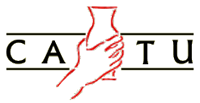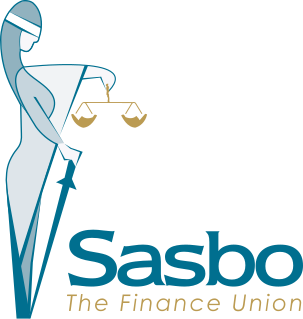Related Research Articles
In British politics, an affiliated trade union is one that is linked to the Labour Party. The party was created by the trade unions and socialist societies in 1900 as the Labour Representation Committee and the unions have retained close institutional links with it.

The Ceramic and Allied Trades Union (CATU) was a trade union representing pottery workers in the United Kingdom.

The Modern Records Centre (MRC) is the specialist archive service of the University of Warwick in Coventry, England, located adjacent to the Central Campus Library. It was established in October 1973 and holds the world's largest archive collection on British industrial relations, as well as archives relating to many other aspects of British social, political and economic history.

SASBO – The Finance Union is a trade union in South Africa. It was founded in 1916 and has a membership of 70,000.

The General Federation of Trade Unions (GFTU) is a national trade union centre in the United Kingdom. It has 35 affiliates with a membership of just over 214,000 and describes itself as the "federation for specialist unions".

The Irish Trades Union Congress (ITUC) was a union federation covering the island of Ireland.
The Amalgamated Society of Engineers (ASE) was a major British trade union, representing factory workers and mechanics.
The South African Trades Union Congress (TUC) was a national trade union federation in South Africa.
The General Council of the Trades Union Congress is an elected body which is responsible for carrying out the policies agreed at the annual British Trade Union Congresses (TUC).
The National Federation of Building Trades Operatives (NFBTO) was a trade union federation in the United Kingdom, consisting of unions with members in construction and related industries.

The Printing and Kindred Trades Federation (P&KTF) was a trade union federation in the United Kingdom.
The Notts Trades Council, formally known as the Nottinghamshire Nottingham and Mansfield Trades Council, brings together trade unionists in Nottinghamshire, in England.
The Trade Union Council of South Africa (TUCSA) was a national trade union federation in South Africa.
The South African Typographical Union (SATU) is a trade union representing workers in the printing and media industries in South Africa.
The South African Boilermakers', Iron and Steel Workers', Shipbuilders' and Welders' Society (SABS) was a trade union representing metalworkers and shipbuilders in South Africa.
The South African Footplate Staff Association (SAFSA) was a trade union representing white railway workers in South Africa.
James Dominic Francis Briggs was an Australian-born South African politician and trade unionist.
The Amalgamated Union of Building Trade Workers of South Africa (AUBTWSA) is a trade union representing workers in the construction industry in South Africa.
The Amalgamated Society of Woodworkers of South Africa (ASW) was a trade union representing carpenters, joiners and those in related trades in South Africa.
References
- 1 2 Gitsham, Ernest; Trembath, James H. (1926). A first account of labour organisation in South Africa (PDF). Durban: E. P. & Commercial Printing. Retrieved 11 April 2021.
- ↑ Kiloh, Margaret; Sibeko, Archie (2000). A Fighting Union. Randburg: Ravan Press. p. xxxii. ISBN 0869755277.